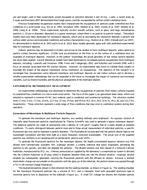Description
Resuspension is an important source of particles in the indoor environment. Particles deposited on various indoor surfaces can be re-entrained by a passing fluid stream, thereby elevating airborne particle concentrations. This can lead to human inhalation exposure and respiratory problems such as lung inflammation in asthmatic and sensitive individuals. This paper presents research related to the development of an experimental methodology to investigate particle resuspension of monolayer and multilayer particle deposits exposed to a variety of flow conditions. Material samples were seeded with monodisperse fluorescent tracer particles (3 and 10 µm) and polydisperse Ultrafine Arizona Test Dust (ATD) (1 to 20 µm). The seeded samples were then exposed to a controlled test flow in a micro-scale wind tunnel, where the air velocity was modified to represent a broad range of flow conditions found in the indoor environment. A fluorescence stereomicroscope was used to precisely count the number of resuspended fluorescent particles. Preliminary experiments have shown that particle resuspension is significantly greater for multilayer deposits compared to monolayer deposits. These findings will help bridge the gap between previous wind tunnel experiments and theoretical models that are limited to monolayer particle deposits and actual deposits in the indoor environment in which particles may be deposited in layers.
Citation: ASHRAE Conference Papers, Las Vegas, NV
Product Details
- Published:
- 2011
- Number of Pages:
- 8
- File Size:
- 1 file , 1.3 MB
- Product Code(s):
- D-LV-11-C053




